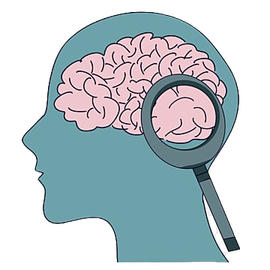The essential features of substance-induced anxiety disorder are prominent and persistent feelings of anxiety that are judged to be due to the direct physiological effects of intoxication or withdrawal from a substance. Prominent anxiety, Panic Attacks, or obsessions or compulsions predominate in the clinical picture. แทงหวย24พลัส
There is evidence from the history, physical examination, or laboratory findings of either:
- The symptoms developed during, or within 1 month of, Substance Intoxication or Withdrawal.
- The symptoms persist for a substantial period of time (e.g., about a month) after the cessation of acute withdrawal or severe intoxication or are substantially in excess of what would be expected given the type or amount of the substance used or the duration of use.
- Medication use is etiologically related to the disturbance.
- There is other evidence suggesting the existence of an independent non-substance-induced Anxiety Disorder (e.g., a history of recurrent non-substance-related episodes).
- The disturbance does not occur exclusively during the course of a Delirium.
- The disturbance causes clinically significant distress or impairment in social, occupational, or other important areas of functioning.
- The disturbance is not due to the direct physiological effects of a substance (e.g., a drug of abuse, a medication) or a general medical condition.
With Generalized Anxiety: if excessive anxiety or worry about a number of events or activities predominates in the clinical presentation.
With Panic Attacks: if Panic Attacks predominate in the clinical presentation.
With Obsessive-Compulsive Symptoms: if obsessions or compulsions predominate in the clinical presentation.
With Phobic Symptoms: if phobic symptoms predominate in the clinical presentation.
Specify if:
With Onset During Intoxication: if the criteria are met for Intoxication with the substance and the symptoms develop during the intoxication syndrome.
With Onset During Withdrawal: if criteria are met for Withdrawal from the substance and the symptoms develop during, or shortly after, a withdrawal syndrome.
Alcohol
Because alcohol has depressive properties, acute intoxication rarely involves acute anxiety or panic. However, acute alcohol withdrawal, may induce an anxiety disorder. Various degrees of subclinical anxiety ranging from panic to generalized anxiety can last for 3-12 months after cessation of drinking.
Cocaine & Psychostimulants
Cocaine & other psychostimulants may produce manifestations of anxiety, most commonly during the intoxication state.
Opiates
Opiate withdrawal actually may share neurochemical characteristics with panic disorder. also protracted anxiety during methadone withdrawal may last several weeks or months.
Cannabis
Marijuana-induced anxiety usually occurs at high doses.
Phencyclidine & Other Hallucinogens
PCP & hallucinogens may acutely produce anxiety & panic, depending on the individual, dose & setting.
Miscellaneous
More commonly used drugs such as caffeine & nicotine withdrawal, may also produce anxiety symptoms.
Associated Features:
Substance-induced anxiety disorder may be experienced by individuals with no preexisting psychopathology as well as those who have a history of erratic or maladaptive behavior. On the other hand, these episodes usually occur in individuals with preexisting anxiety about drug use, especially novice users or in experienced users who have taken more than their usual dose.
Differential Diagnosis
Some disorders have similar symptoms. The clinician, therefore, in his diagnostic attempt has to differentiate against the following disorders which need to be ruled out to establish a precise diagnosis.
To Be Identified.
Cause:
Due to the direct physiological effects of intoxication or withdrawal from a substance.
Treatment:
Cessation of the particular substance.
Counseling and Psychotherapy [ See Therapy Section ]:
Drug counselling may also form part of the treatment regime.



